Active Mind, Creative Spirit
Tip of the Glacier

It’s one of the must see places right now. So we decided back in March that our family summer vacation would be to Glacier National Park. Beauty, drama, mountains and wildlife all in one place. Perfect. I couldn’t wait to get there and set eyes on all the beauty of white caps and capture them forever on film before they are gone. Because scientists now (mostly) agree that they really are vanishing.
We loaded up the family truckster, complete with bike rack and 4 bikes, cooler-o-goodies and drove for 12 hours. I was in the middle of reading a memoir of a famous mountain climber, so I had visions of freezing on frosty mountainsides, ice axes, crevasses, and endless formidable white mountainsides of snow running through my mind. But I have also seen the movie Chasing Ice, a recent documentary about glaciers all over the world receding and the repercussions, and it cut me deeply. (My friend Erik wrote a great review of it, and I think every human on the planet should see the movie.) I’ve seen the glorious photos of the northern Rockies all covered in a beautiful white blanket. That winter cover continues to return every year, but glaciers are not just annual accumulation of winter snowfall. They are the long-term incremental build up and sustained masses of ice and snow that remain and move through a cycle over centuries, not over a season. And I wanted to see them. I hoped I could get near enough I might hear one groan as gravity tugged it down a high valley. I hoped I’d spy crevasses and perhaps a climbing route.
And so we spent 2 days driving around, looking at gorgeous mountains, spotting tiny patches of high snow on distant peaks, and watching the still-icy blue-green water rush by our feet in streams, gathering in glacial lakes. After a couple days, it’s pretty easy (because humans are lulled by shock and awe) to become complacent about the surroundings the way they are. We stopped at Many Glacier, a destination with a large hotel overlooking a gorgeous glacial lake, and the best views of glacier-covered peaks in the park. But the mountains are all bare right now. As I walked down the halls of the hotel, I stopped at each of the photos that lined the walls. Some were taken as early as 1910, when all the 150 glaciers were still there in their majesty. Most of the photos were taken in August, the same month I was there, just 100+ years earlier. Next to each was a more recent photo, often from 1998, or 2000 or 2005, of the same location, taken in August. The difference is stunning, stirring and appalling. At one point, down the longest hall I choked up and looked down at the carpet, then walked away. There are gaping holes in the landscape that should be filled with white. Acres and miles. I was explaining all this to a friend yesterday when he stopped me and said, “This happened on our watch, you know.”
We had a lovely vacation. It’s a gorgeous park and a truly amazing place. Rushing water, soaring striped peaks, meadows of wildflowers and baby mountain goats grazing just off the highway. We swam in glacier-carved lakes, and skipped stones in icy trout streams flowing from just-melted snow. We saw bears and big horn sheep. It’s a pretty phenomenal place. But my heart misses the glaciers. It’s 2013 and for all intents and purposes they’re already gone.

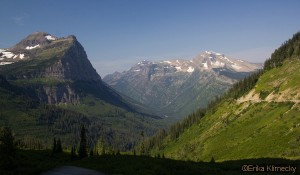
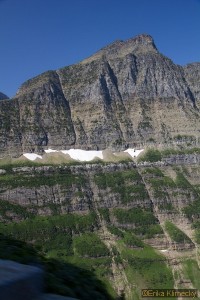
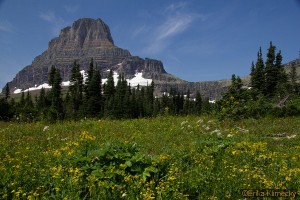
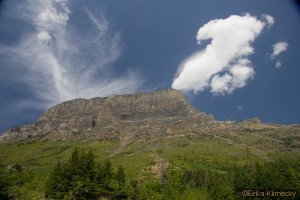
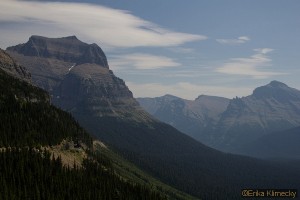

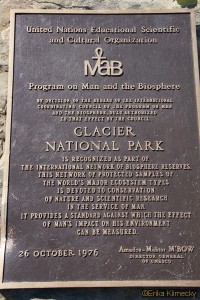
Pingback: What's Left of the Glacier - From My 'ArtFrom My 'Art